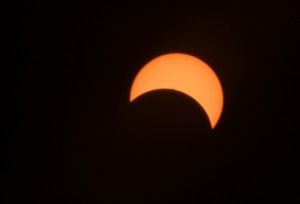Before we get into Las Vegas’ parking dilemma, let’s talk about Radiator Springs.
The fictional town of Pixar’s Cars movies, ostensibly built by automobiles for automobiles, has a charming main street lined with lifestyle businesses: A outdoor bistro (Flo’s V8 Café), an upscale shoe store (Luigi’s Casa Della Tires) and so on. They’re closely grouped and set back a comfortable distance from a wide sidewalk. Radiator Springs looks like a nice place to live, freaky anthropomorphic machines notwithstanding.
But Radiator Springs is not a town that actual sentient cars would build. Why would they bother with sidewalks? Gardens? A true car-built city would be paved from horizon to horizon for ease of movement. It would be smog-choked and deafeningly loud. Cars didn’t go that route because it’s not cinematic and—this is key—because no one wants to live that way. We want to sit at charming streetside cafés, sip on organic fuel and spill the tea with our Maters.
With its six-to-eight-lane streets, giant parking structures and drive-thru everything, Vegas is the home that cars would really build. We may have begun as a town you could circumnavigate in 30 minutes, but this is now a metro area of 2.2 million people. That’s why roadwork in our Valley is exponential and constant. And that’s why our parking situation is fast becoming an existential terror.
What we locals once took for granted—abundant free parking, pretty much anywhere we wanted to go—is gone. Yes, paid casino parking is a drag, but you can beat it with a local ID or player’s club card. What can’t be bypassed is the paid parking in the Arts District and Fremont East, both streetside and in municipal lots. There’s no easy approach to the swarmed parking lots of Chinatown—sometimes so busy that you need to park a distance away from your destination and walk there, on streets that weren’t made for pedestrians. And while there’s plenty of free parking in Summerlin and Green Valley, it’s no fun returning to your car on a mid-August day to discover it’s been converted to an air fryer.
Even in free lots and garages, parking in Vegas is a risky endeavor. Parked cars can be broken into, sideswiped, vandalized or stolen. We didn’t think much about this kind of stuff before because the parking was free, and the spots weren’t hard-won. But now we’re developing the kind of circle-the-block, pay-to-park vibe that cities like New York and LA have had in place for decades, and it feels like a betrayal. It’s bad enough to make us think about staying home.
Ray Delahanty, an urban planner whose YouTube channel CityNerd (youtube.com/@CityNerd) has amassed more than 216,000 followers by examining the myriad ways in which car culture is unmaking us, considers parking a different kind of threat. Delahanty likes Las Vegas; he even lived here for a time. But he’s justly critical of our too-wide, dangerously fast roads, our paucity of rapid transit options and all the real estate we’ve dedicated to parking. (His turns of phrase are terrific; he dryly refers to one of our massive casino parking garages as “luxury housing for cars.”)
“Vegas is a city that has been designed to maximize your ability to be in an air-conditioned vehicle ... I understand why it’s been built that way,” Delahanty says. “But at the same time ... you can’t have a city of a certain size where everybody feels entitled to drive their air-conditioned vehicle to their air conditioned destination. There just isn’t a way [to have] a transportation network that enables all that mobility all at the same time while still having the things that make a city worth living in, which is great destinations where you can arrive and enjoy yourself, walk and experience an actual city environment. Those two things aren’t really compatible.”
Thus far, businesses and residences have addressed this inherent conflict by making even more parking. Legally, they have to: Nearly every business and residence in this Valley is subject to mandates that require a minimum number of parking spaces. (For some examples of this, check out the City of Las Vegas’ unified development code at shorturl.at/dqY59.) But we don’t leave home for a minimum of anything, which is why, for example, the Arts District is converting neighborhood lots to surface parking as fast as they’re emptied, and planning to build a municipal parking garage at the northeast corner of Utah Avenue and Casino Center Boulevard.
Creating greater capacity for cars is how we’ve always done things. If we think there’s no parking where we’re going, we won’t go there. But Delahanty suggests we look at the website of Parking Reform Network (parkingreform.org), a 501(c)3 advocacy group committed to creating awareness about the effects of parking policy on the climate, affordable housing, social equity and traffic. The site provides maps charting how much space 80 American cities devote to surface lots and garages, and Las Vegas’ score isn’t great: 32% of our Downtown is parking. That’s nearly twice as much area as San Diego or Tucson.
Delahanty has a few suggestions, which he admits are a bit radical in nature. Naturally, he’d like to add airport-connected rail transit in the resort corridor, which could reduce the casinos’ need for more and bigger parking structures. (Imagine if the monorail went down the center of the Strip; the incredible views it would provide.) He’d like to see parking mandates abolished: “A lot of cities are lifting those parking mandates, saying, ‘Hey, let’s let the market decide how much parking to provide,’” he says.
And he’d like for cities to hit the pause button on new parking garages. “I would always first ask the question, ‘why do you need this?’ When you build structured parking, you’re building something that’s going to be around for, like, 30 years. In 30 years, will we still be operating our transportation system in the same way as we are today, or are there going to be autonomous vehicles that don’t need parking?”
In the meantime, we can take one car to Chinatown and Downtown Summerlin, instead of two or three. We can use rideshare services or hop on a bus for perhaps the first time in our lives. And if we think the parking area at our destination might be overwhelmed, we can go somewhere else. We can treat parking like it’s a rarity, like they already do in LA, San Diego and Radiator Springs.
“That’s the reality of living in a city,” Delahanty says.
Click HERE to subscribe for free to the Weekly Fix, the digital edition of Las Vegas Weekly! Stay up to date with the latest on Las Vegas concerts, shows, restaurants, bars and more, sent directly to your inbox!


